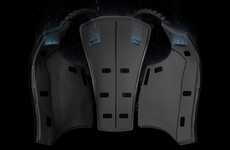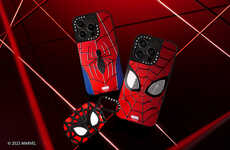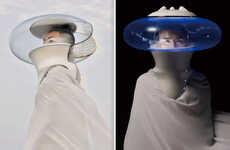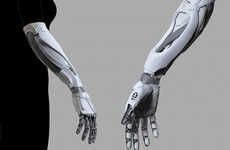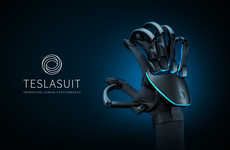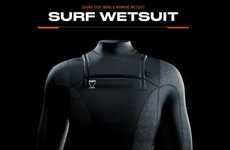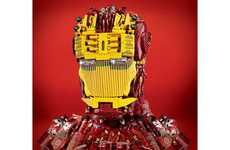
Spidersense by Victor Mateevitsi is Made Up of Robotic Arms
Meghan Young — February 26, 2013 — Art & Design
References: vmateevitsi & dvice
SpiderSense by Victor Mateevitsi, a computer science grad student at University of Illinois in Chicago, is a bodysuit that gives people a semblance of Spider Man's spidey sense--hence the name. This sixth sense, so to speak, gave the comic book superhero the ability to sense things were such as buildings, fists and trees without perceiving them the traditional way.
Made up of seven small robotic arms inside microphone-equipped modules that send and receive ultrasonic reflections of the things around the wearer, SpiderSense by Victor Mateevitsi can do that as well. While Spider Man, a.k.a. Peter Parker, was able to do that with his own innate senses, the ability is mimicked with the robotic arms push parts of the body that are closest to what is being sensed nearby.
Made up of seven small robotic arms inside microphone-equipped modules that send and receive ultrasonic reflections of the things around the wearer, SpiderSense by Victor Mateevitsi can do that as well. While Spider Man, a.k.a. Peter Parker, was able to do that with his own innate senses, the ability is mimicked with the robotic arms push parts of the body that are closest to what is being sensed nearby.
Trend Themes
1. Spidersense Technology - The development of SpiderSense technology opens up opportunities for creating innovative sensory-enhancing products.
2. Robotic Arm Integration - The integration of robotic arms into wearable technology presents disruptive innovation opportunities in various industries.
3. Enhanced Human Senses - The pursuit of enhancing human senses through advanced technologies offers potential for disruptive innovations in multiple sectors.
Industry Implications
1. Sports and Fitness - The sports and fitness industry can explore the integration of SpiderSense technology to enhance athletes' sensory perception and performance.
2. Healthcare and Rehabilitation - The healthcare and rehabilitation industry can leverage robotic arm integration to develop sensory-assistive devices for individuals with impairments or disabilities.
3. Entertainment and Gaming - The entertainment and gaming industry can incorporate enhanced human senses technology to create immersive experiences and virtual reality simulations.
4.1
Score
Popularity
Activity
Freshness


